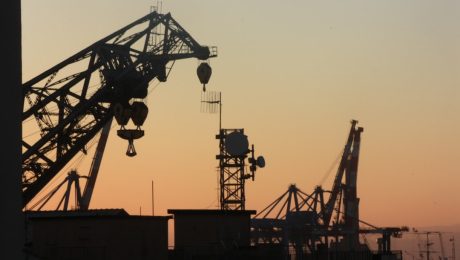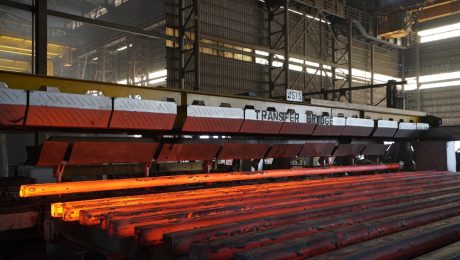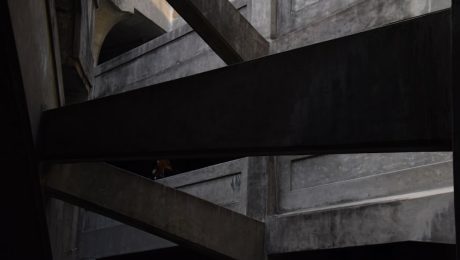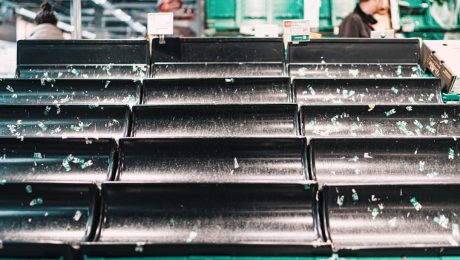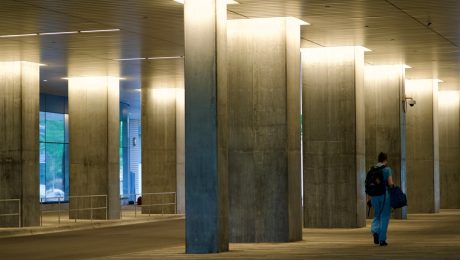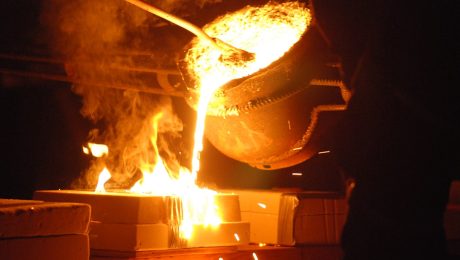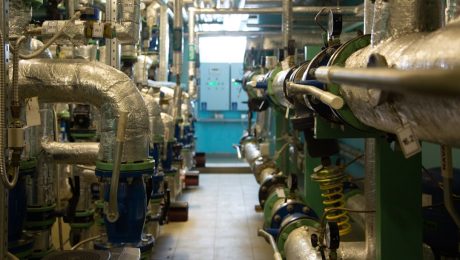body {
font-family: sans-serif;
line-height: 1.6;
}
h1, h2, h3 {
color: #333;
}
img {
max-width: 100%;
height: auto;
display: block;
margin: 1em auto;
}
For decades, steel has been a cornerstone of construction, renowned for its strength and durability. However, its inherent thermal conductivity presented a significant challenge in energy-efficient building design. Enter thermally insulated steel profiles – a revolutionary solution that marries the robustness of steel with superior thermal insulation, creating a game-changer in modern architecture and engineering.
Understanding the Core: How Thermally Insulated Steel Profiles Work
Thermally insulated steel profiles achieve their remarkable thermal performance through the incorporation of a high-performance insulation material within the steel structure. This insulation acts as a barrier, significantly reducing the transfer of heat through the profile. Common insulation materials include polyurethane foam, polyisocyanurate (PIR), and mineral wool. The insulation is typically injected, foamed, or bonded into a cavity within the steel profile, creating a composite material with dramatically improved thermal properties. This innovative design allows for thinner profiles compared to traditional methods of achieving similar levels of thermal insulation, maximizing space and design flexibility.
Superior Thermal Performance: Energy Efficiency Redefined
The primary advantage of thermally insulated steel profiles lies in their exceptional thermal performance. By minimizing heat transfer, these profiles contribute significantly to energy efficiency in buildings. This translates to lower heating and cooling costs, reduced carbon footprint, and a more comfortable indoor environment. Compared to traditional steel profiles, insulated versions boast significantly higher U-values (a measure of thermal transmittance), indicating lower heat loss in winter and heat gain in summer. This enhanced performance is particularly crucial in regions with extreme climates, where energy consumption for heating and cooling can be substantial.
Diverse Applications: From Facades to Frames
The versatility of thermally insulated steel profiles makes them suitable for a wide range of applications in construction and engineering. They are commonly used in:
- Curtain walls: Creating aesthetically pleasing and energy-efficient building facades.
- Window and door frames: Improving the thermal performance of windows and doors, minimizing drafts and heat loss.
- Roofing systems: Providing structural support while enhancing the thermal insulation of roofs.
- Industrial applications: Used in cold storage facilities, refrigerated transport, and other applications requiring robust thermal insulation.
- Interior partitions: Offering both structural integrity and sound insulation.
Manufacturing Processes: Precision and Innovation
The manufacturing process of thermally insulated steel profiles requires precision and advanced technology. Typically, the process involves forming the steel profile, creating a cavity within the profile, and then injecting or bonding the insulation material into the cavity. Strict quality control measures are essential to ensure uniform insulation density and optimal thermal performance. Advanced techniques like robotic welding and automated insulation injection contribute to high production efficiency and consistent product quality. The final product undergoes rigorous testing to verify its thermal performance and structural integrity before being deployed in construction projects.
Future Trends and Innovations in Insulated Steel Profiles
The field of thermally insulated steel profiles is constantly evolving. Research and development focus on:
- Improved insulation materials: Exploring new materials with enhanced thermal performance, reduced environmental impact, and improved fire resistance.
- Advanced manufacturing techniques: Developing more efficient and cost-effective manufacturing processes to increase production capacity and reduce costs.
- Integration with smart building technologies: Combining insulated steel profiles with sensors and control systems to optimize energy consumption and enhance building automation.
- Sustainable manufacturing practices: Focusing on reducing the environmental footprint of the manufacturing process through the use of recycled materials and energy-efficient production methods.
- Enhanced design flexibility: Developing new profile designs that offer greater design freedom and aesthetic possibilities for architects and engineers.
Thermally insulated steel profiles represent a significant advancement in building technology, offering a compelling combination of strength, durability, and energy efficiency. As technology continues to advance, we can expect even more innovative and sustainable solutions to emerge, further solidifying their role in shaping the future of construction.
Tags: thermally insulated steel profiles, insulated steel sections, energy efficient steel, steel construction, sustainable building materials
body {
font-family: sans-serif;
line-height: 1.6;
}
h1, h2, h3 {
color: #333;
}
The steel industry, a cornerstone of global infrastructure and manufacturing, faces unique challenges in managing its intricate supply chain. From the extraction of raw materials to the delivery of finished products, the process is complex, demanding, and highly susceptible to external factors. Efficient supply chain management (SCM) is not just beneficial – it’s crucial for survival and profitability in this competitive landscape.
Securing the Raw Materials: From Ore to Mill
The journey begins with the sourcing of raw materials, primarily iron ore, coal, and limestone. This stage is fraught with geopolitical risks, fluctuating commodity prices, and environmental concerns. Steelmakers must navigate complex international markets, securing long-term contracts with reliable suppliers while mitigating price volatility. Sustainable sourcing practices, including responsible mining and ethical labor standards, are increasingly important considerations for both environmental and reputational reasons. Furthermore, the transportation of these bulky raw materials – often over vast distances – presents significant logistical hurdles and contributes significantly to the overall carbon footprint. Efficient transportation planning, including optimized rail and sea freight, is therefore paramount.
Optimizing Steel Production: Efficiency and Quality Control
The steelmaking process itself demands meticulous management. Integrated steel mills, which handle the entire process from raw materials to finished products, require sophisticated scheduling and inventory control systems to ensure smooth operations. Minimizing downtime through proactive maintenance and efficient resource allocation is critical. Quality control is paramount; stringent testing procedures at every stage of production are essential to meet customer specifications and industry standards. The implementation of advanced technologies such as automation and data analytics plays a crucial role in enhancing both efficiency and quality control throughout the production process. Real-time monitoring of production parameters allows for immediate adjustments and prevents costly errors.
Navigating the Logistics Maze: Transportation and Delivery
Once the steel is produced, efficient logistics are essential for timely delivery to customers. Steel products, ranging from raw coils to highly specialized components, require specialized transportation methods. This includes rail, road, and sea freight, each presenting unique challenges in terms of cost, speed, and environmental impact. Careful route planning, optimized containerization, and effective coordination with transportation providers are key to minimizing delays and ensuring on-time delivery. Furthermore, the increasing demand for traceability and transparency in the supply chain necessitates the use of advanced tracking systems, providing real-time visibility into the location and status of shipments.
Inventory Management: Balancing Supply and Demand
Effective inventory management is crucial for preventing stockouts and minimizing storage costs. Steel, a bulky and often expensive material, requires sophisticated inventory control systems to optimize storage space and minimize waste. Accurate demand forecasting is essential to anticipate customer needs and adjust production accordingly. This involves analyzing historical sales data, market trends, and macroeconomic factors to create accurate predictions. Just-in-time (JIT) inventory management techniques, while challenging to implement in the steel industry due to the long lead times involved in production, can significantly reduce storage costs and improve efficiency when implemented effectively. Advanced inventory management systems, often integrated with enterprise resource planning (ERP) systems, provide real-time visibility into inventory levels and facilitate better decision-making.
Embracing Technology: Digital Transformation in Steel SCM
The steel industry is undergoing a significant digital transformation, with technology playing an increasingly important role in optimizing supply chain management. This includes the adoption of blockchain technology for enhanced traceability and transparency, the use of artificial intelligence (AI) for predictive maintenance and demand forecasting, and the implementation of Internet of Things (IoT) sensors for real-time monitoring of production and logistics processes. Data analytics provides valuable insights into various aspects of the supply chain, enabling data-driven decision-making and continuous improvement. The integration of these technologies requires substantial investment but offers significant potential for cost reduction, improved efficiency, and enhanced sustainability.
In conclusion, mastering supply chain management in the steel industry requires a holistic approach that encompasses all stages of the process, from raw material sourcing to final delivery. By embracing technology, optimizing processes, and focusing on sustainability, steel companies can enhance their competitiveness, improve profitability, and build a more resilient and efficient supply chain for the future.
SEO-Friendly Tags:
- Steel Supply Chain Management
- Steel Industry Logistics
- Steel Inventory Optimization
- Raw Materials Steel Sourcing
- Technology in Steel Production
body {
font-family: sans-serif;
line-height: 1.6;
}
h1, h2, h3 {
color: #333;
}
The machinery manufacturing industry relies heavily on a consistent and reliable supply of high-quality steel. From the smallest component to the largest frame, steel forms the backbone of countless machines. Understanding the intricacies of steel supply is crucial for manufacturers to ensure profitability, maintain quality, and meet production deadlines. This comprehensive guide delves into the key aspects of steel procurement for machinery manufacturing.
Sourcing Steel: Finding the Right Supplier
Finding the right steel supplier is paramount. The selection process should involve careful consideration of several factors. Firstly, reliability is key. Suppliers must consistently meet delivery deadlines and provide accurate order fulfillment. Secondly, quality certifications, such as ISO 9001, are essential to ensure the steel meets the required standards. Thirdly, supplier capacity should be assessed to ensure they can handle the required volume of steel, especially during peak production periods. Finally, price and payment terms need to be negotiated to secure a competitive advantage. Building strong relationships with multiple reliable suppliers is a smart strategy to mitigate risk and ensure a continuous supply chain.
Steel Grades and Their Applications in Machinery
Different machinery applications require different steel grades. Understanding these nuances is crucial for selecting the appropriate material. Mild steel, known for its ductility and weldability, is commonly used in less demanding applications. Medium carbon steel offers increased strength and hardness, suitable for components requiring greater durability. High carbon steel is chosen for its exceptional strength and wear resistance, often used in high-stress applications like gears and shafts. Alloy steels, incorporating elements like chromium, nickel, and molybdenum, offer enhanced properties such as corrosion resistance and high-temperature strength. The choice of steel grade directly impacts the performance, longevity, and safety of the machinery.
Quality Control: Ensuring Steel Meets Specifications
Ensuring the quality of incoming steel is non-negotiable. A robust quality control system should be in place to verify that the supplied steel meets the specified standards. This involves incoming inspection, where materials are tested for chemical composition, mechanical properties, and surface finish. Non-destructive testing (NDT) methods, such as ultrasonic testing and magnetic particle inspection, can detect internal flaws without damaging the material. Maintaining detailed records of all testing and inspection results is crucial for traceability and accountability. A proactive approach to quality control minimizes the risk of defects and ensures the production of high-quality machinery.
Cost Optimization: Strategies for Efficient Steel Procurement
Managing steel costs effectively is crucial for maintaining profitability. Several strategies can help optimize steel procurement. Negotiating favorable contracts with suppliers is essential, ensuring competitive pricing and potentially securing volume discounts. Inventory management plays a crucial role in minimizing storage costs and preventing obsolescence. Lean manufacturing principles can be applied to reduce waste and optimize the use of steel during the manufacturing process. Exploring alternative steel grades or sourcing from different regions can also lead to cost savings, provided quality standards are maintained. Careful planning and strategic decision-making are key to achieving cost optimization.
Steel Supply Chain Management: Building Resilience and Efficiency
Effective steel supply chain management is critical for mitigating risks and ensuring smooth operations. This involves establishing strong relationships with key suppliers, implementing robust inventory control systems, and developing contingency plans to address potential disruptions. Diversifying suppliers reduces reliance on a single source and mitigates the impact of supply chain shocks. Utilizing advanced technologies such as blockchain and AI can enhance transparency and traceability throughout the supply chain. Regular performance reviews of suppliers and internal processes are essential for continuous improvement and optimization. A well-managed supply chain ensures a consistent and reliable supply of steel, supporting efficient and profitable machinery manufacturing.
By carefully considering these aspects of steel supply, machinery manufacturers can significantly improve their operations, enhance product quality, and ensure long-term success in a competitive market.
SEO Tags:
- Steel supply chain management
- Machinery steel procurement
- Steel grades for machinery
- Industrial steel sourcing
- Steel quality control in manufacturing
Choosing the right material for a construction project is crucial for its success. Two titans dominate the world of building materials: concrete and steel. Both offer unique properties and are used extensively in various applications. This in-depth comparison will explore their strengths, weaknesses, costs, and ideal applications to help you understand which material reigns supreme for your specific needs.
Strength and Durability: A Head-to-Head Comparison
Concrete, a composite material made of cement, aggregates, and water, excels in compressive strength. This means it’s incredibly resistant to crushing forces. It’s ideal for foundations, columns, and other structural elements requiring high compressive loads. However, its tensile strength (resistance to pulling forces) is significantly lower. Steel, on the other hand, boasts exceptional tensile strength, making it perfect for beams, girders, and other components subjected to significant pulling or bending stresses. While steel can also withstand compressive forces, its primary advantage lies in its tensile capacity. The durability of both materials depends on factors like quality of materials, construction techniques, and environmental conditions. Steel is susceptible to corrosion, requiring protective measures like galvanization or painting. Concrete can crack under extreme stress or due to improper curing, but modern admixtures have significantly improved its durability and crack resistance.
Cost Analysis: Balancing Budget and Performance
The cost of concrete and steel varies depending on location, availability, and market fluctuations. Generally, concrete is often considered less expensive than steel, especially for large-scale projects. The cost of concrete is primarily determined by the price of cement, aggregates, and labor. Steel prices are influenced by global commodity markets and can fluctuate significantly. However, the overall cost of a project isn’t solely determined by the material cost. The fabrication and installation costs for steel can be higher than those for concrete, particularly for complex structures. Furthermore, the need for protective coatings against corrosion adds to the overall cost of steel construction. A thorough cost-benefit analysis considering both material and labor costs is essential for informed decision-making.
Sustainability and Environmental Impact: A Green Building Perspective
Both concrete and steel have environmental impacts. Cement production, a key component of concrete, is a significant source of carbon dioxide emissions. Steel production also requires substantial energy and contributes to greenhouse gas emissions. However, both materials can be made more sustainable through the use of recycled content and innovative production methods. Recycled aggregates can be incorporated into concrete, reducing the demand for virgin materials. Steel can be recycled efficiently, reducing the need for new steel production. Furthermore, the design and construction methods employed can significantly influence the overall environmental footprint of a project. Sustainable construction practices, such as minimizing waste and optimizing material usage, are crucial for reducing the environmental impact of both concrete and steel structures.
Applications and Suitability: Choosing the Right Material for the Job
The choice between concrete and steel often depends on the specific application and project requirements. Concrete is ideally suited for structures requiring high compressive strength and stability, such as foundations, dams, and retaining walls. Its ability to be cast into various shapes and forms makes it versatile for creating complex structures. Steel’s high tensile strength makes it the preferred material for tall buildings, bridges, and other structures requiring long spans. Its ductility (ability to deform without breaking) allows it to absorb energy during seismic events, enhancing the structural integrity of buildings in earthquake-prone regions. Often, a combination of both materials, known as composite construction, is employed to leverage the strengths of each, resulting in robust and efficient structures.
Maintenance and Lifespan: Long-Term Considerations
The long-term performance and maintenance requirements of concrete and steel differ significantly. Concrete structures generally require less maintenance than steel structures, particularly if properly designed and constructed. Regular inspections for cracks and other damage are essential. Repairing concrete structures often involves localized patching or resurfacing. Steel structures, being susceptible to corrosion, require more frequent maintenance, including regular inspections, cleaning, and repainting or recoating to protect against rust. The lifespan of both materials can be extended through proper design, construction, and maintenance practices. However, steel structures might require more frequent and costly maintenance interventions compared to concrete structures over their lifespan.
In conclusion, the choice between concrete and steel is not a simple one. It depends on a variety of factors, including the specific application, budget, environmental considerations, and long-term maintenance requirements. A thorough understanding of the strengths and weaknesses of each material is crucial for making informed decisions that ensure the success and longevity of any construction project.
Navigating the steel market can feel like navigating a minefield. Prices fluctuate wildly, supply chains are complex, and choosing the right procurement strategy is crucial for profitability. Two dominant approaches stand out: spot contracts and long-term contracts. This in-depth guide will dissect the nuances of each, helping you determine which strategy best aligns with your business needs.
Understanding Spot Steel Contracts: Riding the Price Wave
Spot steel contracts are agreements for the immediate purchase and delivery of steel. They’re characterized by their short-term nature, often ranging from a few days to a few weeks. The price is determined at the time of purchase, reflecting the current market conditions. This means you benefit from potentially lower prices during market downturns but face the risk of price spikes during periods of high demand or supply chain disruptions.
Advantages of Spot Contracts:
- Price Flexibility: Capitalize on low prices when the market dips.
- Flexibility in Volume: Purchase only what you need, reducing storage costs and inventory risks.
- Faster Procurement: Quick turnaround times are ideal for urgent projects.
Disadvantages of Spot Contracts:
- Price Volatility: Exposure to significant price fluctuations can impact profitability.
- Supply Uncertainty: Finding reliable suppliers and securing timely delivery can be challenging.
- Increased Transaction Costs: Frequent procurement necessitates more administrative overhead.
Long-Term Steel Contracts: Stability and Predictability
Long-term steel contracts, in contrast, involve agreements for the supply of steel over an extended period, typically ranging from several months to several years. These contracts often stipulate a fixed price or a price-adjustment mechanism based on established indices, offering greater price certainty than spot contracts. They provide a degree of supply chain stability, ensuring a consistent flow of materials.
Advantages of Long-Term Contracts:
- Price Stability: Reduces exposure to market price volatility, improving budgeting accuracy.
- Guaranteed Supply: Secures a reliable source of steel, minimizing supply chain disruptions.
- Improved Supplier Relationships: Cultivates strong partnerships with preferred suppliers.
- Potential for Volume Discounts: Large-volume commitments often lead to negotiated price reductions.
Disadvantages of Long-Term Contracts:
- Price Risk in a Downward Market: Locked-in prices might be higher than prevailing market rates during price drops.
- Less Flexibility: Adjusting procurement volumes can be challenging due to contractual obligations.
- Potential for Contractual Disputes: Misunderstandings or unforeseen circumstances can lead to legal complications.
Risk Management: A Key Consideration in Steel Procurement
Both spot and long-term contracts involve inherent risks. Spot contracts expose you to price volatility and supply chain uncertainty, while long-term contracts carry the risk of price lock-in during market downturns. Effective risk management strategies are crucial regardless of your chosen approach.
For spot contracts, consider using hedging strategies, diversifying your supplier base, and maintaining robust inventory management systems. For long-term contracts, carefully analyze market trends, negotiate flexible pricing mechanisms, and ensure clear contractual terms to mitigate potential disputes.
Supply Chain Stability: Ensuring Consistent Steel Supply
Maintaining a stable and reliable steel supply is paramount for any manufacturing business. Long-term contracts excel in this area by guaranteeing a consistent flow of materials, reducing the risk of production delays due to supply shortages. However, even with long-term contracts, unforeseen events such as natural disasters or geopolitical instability can still affect supply. Therefore, diversification of suppliers, even within a long-term contract strategy, can be a valuable risk mitigation technique.
Choosing the Right Contract: Aligning Strategy with Business Needs
The optimal choice between spot and long-term steel contracts depends heavily on your specific business context. Factors to consider include your risk tolerance, production volume, forecasting accuracy, and the stability of your demand. Companies with stable, predictable demand and a higher risk aversion generally favor long-term contracts. Businesses with fluctuating demand, a higher risk tolerance, and the ability to adjust quickly to market changes may find spot contracts more suitable. In some cases, a hybrid approach, combining elements of both spot and long-term contracts, can be the most effective solution.
Ultimately, a thorough understanding of market dynamics, careful analysis of your business needs, and a well-defined risk management strategy are essential for making informed decisions about steel procurement.
Tags: steel contracts, spot steel, long-term steel contracts, steel pricing, steel supply chain
body {
font-family: sans-serif;
line-height: 1.6;
}
h1, h2, h3 {
color: #333;
}
img {
max-width: 100%;
height: auto;
display: block;
margin: 20px auto;
}
In the ever-evolving landscape of modern architecture, the pursuit of innovative design often necessitates the use of robust and versatile structural elements. IPE beams, with their inherent strength and adaptability, have become a cornerstone of contemporary building projects, enabling architects to realize ambitious and aesthetically pleasing designs. This comprehensive guide delves into the world of IPE beams, exploring their applications, advantages, and crucial design considerations.
Understanding the IPE Beam Profile
IPE beams, also known as parallel flange I-beams, are hot-rolled steel sections characterized by their distinctive “I” shape. This profile maximizes their strength-to-weight ratio, making them ideal for spanning large distances while minimizing material usage. The parallel flanges provide excellent stability and resistance to bending, while the web efficiently transfers loads. The precise dimensions and properties of IPE beams are standardized, ensuring consistency and ease of specification. These standardized dimensions are crucial for efficient design and construction processes, facilitating accurate calculations and minimizing on-site adjustments.
IPE Beams in Modern Architectural Applications
The versatility of IPE beams extends across a diverse range of architectural applications. They are frequently employed in:
- Residential Construction: Supporting floors, roofs, and balconies in both new constructions and renovations. Their strength allows for larger open-plan spaces and the creation of unique architectural features.
- Commercial Buildings: Forming the structural framework of offices, retail spaces, and industrial buildings. Their ability to span significant distances without intermediate supports is highly advantageous in open-plan designs.
- Industrial Structures: Providing robust support for heavy machinery and equipment in factories and warehouses. Their high load-bearing capacity is essential in these demanding environments.
- Public Buildings: Contributing to the structural integrity of museums, libraries, and other public spaces. Their durability and strength ensure the longevity of these important structures.
- Infrastructure Projects: Supporting bridges, walkways, and other infrastructure elements. Their resilience makes them suitable for applications that require high resistance to environmental stresses.
Advantages of Using IPE Beams in Modern Design
The popularity of IPE beams in modern architecture stems from several key advantages:
- High Strength-to-Weight Ratio: IPE beams offer exceptional strength relative to their weight, allowing architects to create lightweight yet robust structures.
- Versatility: Their shape and standardized dimensions make them adaptable to a wide range of architectural designs and building types.
- Cost-Effectiveness: The efficient use of material and ease of installation contribute to their overall cost-effectiveness.
- Durability and Longevity: Made from high-quality steel, IPE beams are highly resistant to corrosion and wear, ensuring long-term structural integrity.
- Sustainability: Steel is a recyclable material, making IPE beams a more sustainable choice compared to some alternative construction materials.
Design Considerations for IPE Beams
While IPE beams offer numerous benefits, careful consideration of several design aspects is crucial for successful implementation:
- Load Calculations: Accurate load calculations are essential to determine the appropriate size and spacing of IPE beams to ensure structural stability.
- Span Length: The maximum span length for IPE beams depends on the beam’s size and the loads it will carry. Careful consideration must be given to this aspect to prevent deflection and ensure structural integrity.
- Connections: Properly designed and executed connections are vital for transferring loads effectively from the beams to other structural elements. This often involves welding, bolting, or a combination of both.
- Fire Protection: In certain applications, fire protection measures may be necessary to ensure the beams’ structural integrity in the event of a fire. This might involve applying fire-resistant coatings or encapsulating the beams.
- Corrosion Protection: While steel is relatively durable, appropriate corrosion protection measures, such as painting or galvanizing, are often necessary to extend the lifespan of the beams, especially in harsh environmental conditions.
IPE Beams and Sustainable Architecture
The inherent recyclability of steel makes IPE beams a compelling choice for sustainable architecture. The use of recycled steel in the manufacturing process further reduces the environmental impact. Furthermore, the durability and longevity of IPE beams contribute to the overall sustainability of a building by minimizing the need for replacements and reducing construction waste over the building’s lifecycle. Architects increasingly prioritize sustainable building materials, and IPE beams align perfectly with this trend, offering a robust and environmentally responsible solution for modern construction.
In conclusion, IPE beams represent a powerful and versatile structural solution for contemporary architecture. Their exceptional strength, adaptability, and sustainability contribute to the creation of innovative and aesthetically pleasing designs across a wide range of applications. By carefully considering the design factors outlined above, architects can harness the full potential of IPE beams to shape truly remarkable modern architectural masterpieces.
Tags: IPE beams, steel beams, structural steel, modern architecture, sustainable construction
In a world increasingly focused on sustainability and resource efficiency, the design of long-life steel products is not just a desirable attribute—it’s a necessity. Creating steel products that withstand the test of time requires a deep understanding of material science, manufacturing processes, and environmental factors. This post delves into the crucial aspects of designing steel products for exceptional longevity, exploring the journey from initial concept to final, enduring product.
1. Strategic Material Selection: The Foundation of Durability
The journey towards a long-life steel product begins with meticulous material selection. The choice of steel grade directly impacts its resistance to corrosion, wear, and fatigue. High-strength low-alloy (HSLA) steels offer an excellent balance of strength and weldability, making them suitable for various applications. For extreme environments, stainless steels, particularly those with higher chromium content, provide superior corrosion resistance. Consideration must also be given to the specific application. A steel bridge requires different properties than a surgical instrument. Factors like anticipated stress levels, exposure to chemicals, and temperature fluctuations all play a crucial role in determining the optimal steel grade. Advanced techniques like microalloying can further enhance the properties of the chosen steel, tailoring it to specific performance requirements. Life cycle assessment (LCA) should also be integrated into this stage, considering the environmental impact of steel production and the overall carbon footprint of the product.
2. Optimized Manufacturing Processes: Precision and Efficiency
The manufacturing process significantly influences the final product’s lifespan. Precise fabrication techniques minimize internal stresses and defects that can act as initiation points for fatigue and fracture. Advanced manufacturing methods like robotic welding offer superior consistency and precision compared to traditional methods, leading to stronger and more reliable welds. Proper heat treatment is crucial for achieving the desired mechanical properties, such as hardness and tensile strength. Careful control of temperature and time during heat treatment prevents the formation of undesirable microstructures that compromise durability. Furthermore, the use of Computer-Aided Design (CAD) and Computer-Aided Manufacturing (CAM) allows for the creation of optimized designs that minimize stress concentrations and improve overall structural integrity. Careful quality control at each stage of the manufacturing process is essential to ensure the final product meets the required standards of longevity.
3. Protective Coatings: Shielding Against the Elements
Protecting steel from the harsh realities of its environment is paramount for extending its lifespan. A wide range of protective coatings are available, each tailored to specific environmental conditions. Galvanization, a process of applying a zinc coating, provides excellent corrosion protection through sacrificial anodic protection. Powder coating offers a durable, aesthetically pleasing finish that resists chipping and abrasion. For more extreme environments, specialized coatings like epoxy resins or polyurethane can offer additional protection against chemicals and UV radiation. The selection of the appropriate coating depends on factors such as the severity of the environment, the required aesthetic finish, and the cost-effectiveness of the chosen method. Proper surface preparation before applying the coating is crucial for optimal adhesion and performance. Regular inspection and maintenance of the protective coating are also vital in ensuring its continued effectiveness.
4. Design for Durability: Engineering for Longevity
The design itself plays a pivotal role in determining the lifespan of a steel product. Stress analysis using Finite Element Analysis (FEA) helps predict potential points of failure and optimize the design for maximum strength and durability. Minimizing stress concentrations through careful geometry design is essential. Sharp corners and abrupt changes in section should be avoided as they can act as stress risers. Proper consideration of fatigue loading is also important, particularly for components subjected to cyclic loading. Designing for repairability and maintainability extends the product’s lifespan by allowing for easy repair or replacement of damaged components rather than discarding the entire product. This approach aligns with circular economy principles, reducing waste and maximizing resource utilization.
5. Lifecycle Management and Sustainability: Beyond the Design Stage
Designing for long life doesn’t end with the manufacturing process. Effective lifecycle management strategies are essential for maximizing the product’s operational lifespan. This includes providing clear instructions for proper use and maintenance, ensuring easy access to spare parts, and offering repair services. Implementing a robust quality control system throughout the product’s lifecycle helps identify and address potential issues early on, preventing premature failure. Furthermore, incorporating sustainability principles into the design process, such as using recycled steel and minimizing material usage, contributes to a more environmentally friendly approach. End-of-life management strategies, such as recycling or responsible disposal, further minimize the environmental impact, closing the loop and promoting a circular economy.
By carefully considering these five key aspects—material selection, manufacturing, coatings, design, and lifecycle management—we can create steel products that not only meet performance requirements but also stand the test of time, contributing to a more sustainable and resource-efficient future. The art and science of designing long-life steel products are intertwined, demanding a holistic approach that encompasses all stages of the product’s journey.
SEO Tags:
- Long-life steel
- Durable steel products
- Steel design for longevity
- Corrosion resistant steel
- Sustainable steel design
Industrial pipes are the unsung heroes of manufacturing. These seemingly simple components form the crucial circulatory system of any factory, transporting vital fluids, gases, and slurries that keep production lines running smoothly. Choosing the right pipes is not just about cost; it’s about ensuring safety, efficiency, and the longevity of your operations. This comprehensive guide will help you navigate the complexities of industrial pipe selection for your manufacturing facility.
Understanding Material Selection: The Heart of Durability
The material of your industrial pipes dictates their lifespan, resistance to corrosion, pressure tolerance, and overall suitability for your specific application. Common materials include:
- Carbon Steel: A workhorse material offering excellent strength and affordability. Suitable for high-pressure applications but susceptible to corrosion, requiring protective coatings or galvanization in many environments.
- Stainless Steel: Highly resistant to corrosion and degradation, making it ideal for handling chemicals, acidic substances, and high-purity fluids. More expensive than carbon steel but offers superior longevity.
- Cast Iron: Durable and resistant to internal pressure, often used in wastewater and drainage systems. However, it’s brittle and susceptible to cracking under stress.
- Copper: Excellent corrosion resistance and thermal conductivity, making it suitable for applications requiring heat transfer or handling potable water. However, it’s relatively soft and can be prone to deformation under high pressure.
- PVC (Polyvinyl Chloride): A lightweight and cost-effective option for low-pressure applications handling non-corrosive fluids. Not suitable for high temperatures or high pressures.
- CPVC (Chlorinated Polyvinyl Chloride): Offers higher temperature and pressure resistance than PVC, expanding its application range.
The selection process should involve a careful assessment of the transported medium, operating temperature and pressure, and the surrounding environment to ensure optimal material choice.
Pipe Diameter and Flow Rate: Optimizing Your System’s Efficiency
The diameter of your pipes directly impacts the flow rate of the transported medium. Choosing the incorrect diameter can lead to bottlenecks, reduced efficiency, and increased energy consumption. Hydraulic calculations are essential to determine the optimal pipe diameter for your specific application, considering factors such as fluid viscosity, desired flow rate, and allowable pressure drop.
Using oversized pipes might seem like a solution to avoid bottlenecks, but it leads to unnecessary material costs and increased system inertia. Conversely, undersized pipes can restrict flow, leading to increased pressure drops, pump wear, and potential system failures. A well-designed piping system balances flow rate, pressure, and cost-effectiveness.
Safety Regulations and Compliance: Protecting Your Workforce and Environment
Industrial pipe systems are subject to stringent safety regulations to prevent leaks, explosions, and other hazards. Compliance is crucial not only to avoid penalties but also to ensure the safety of your workforce and the environment. Regulations vary by location and industry, but common considerations include:
- Pressure testing: Regular testing to verify the integrity of the pipe system and identify potential weaknesses.
- Corrosion protection: Implementing measures to prevent corrosion and extend the lifespan of the pipes.
- Leak detection systems: Implementing systems to quickly identify and address leaks, minimizing environmental impact and safety risks.
- Proper installation and maintenance: Adhering to industry best practices for installation and regular maintenance to ensure the system’s integrity.
- Emergency shutdown procedures: Establishing clear procedures for shutting down the system in case of emergencies.
Staying informed about relevant regulations and standards is paramount to ensuring a safe and compliant industrial piping system.
Connecting the Dots: Fittings and Valves for Seamless Integration
Pipes alone don’t form a functional system; they require a network of fittings and valves for direction, control, and connection. Choosing the right fittings and valves is crucial for system integrity and performance. Common fittings include elbows, tees, reducers, and flanges, each designed for specific purposes and connections. Valves, such as gate valves, globe valves, ball valves, and check valves, control the flow of fluids and provide isolation capabilities.
Material compatibility between pipes and fittings is critical. Using dissimilar materials can lead to galvanic corrosion, compromising the system’s longevity. Careful consideration of pressure ratings and temperature limits for fittings and valves is also essential to ensure safe and reliable operation.
Long-Term Maintenance and Cost Considerations: A Holistic Approach
The initial cost of industrial pipes is only one aspect of the overall investment. Long-term maintenance, repair, and potential replacement costs must be factored in. Regular inspections, preventative maintenance, and a proactive approach to addressing potential issues can significantly extend the lifespan of your piping system and minimize costly downtime. Choosing durable materials and employing proper installation techniques from the outset contributes significantly to reducing long-term maintenance expenses.
Furthermore, consider the environmental impact of your choices. Choosing sustainable materials and implementing efficient system designs can contribute to a greener manufacturing process.
Selecting the right industrial pipes for your manufacturing facility is a critical decision with far-reaching implications. By carefully considering material selection, flow rate optimization, safety regulations, fitting and valve compatibility, and long-term maintenance, you can ensure a robust, efficient, and safe piping system that supports your operations for years to come.
Tags: industrial pipes, manufacturing pipes, pipe selection, industrial piping systems, pipe materials
In today’s interconnected world, efficient logistics are the backbone of successful businesses. The movement of goods, whether across oceans or continents, requires a sophisticated understanding of both maritime and land logistics. This post delves into key strategies for optimizing your supply chain, ensuring timely delivery and cost-effectiveness.
1. Optimizing Maritime Transportation: Charting a Course for Efficiency
Maritime transport, while cost-effective for large volumes, presents unique challenges. Optimizing this leg of your supply chain requires careful planning and execution. Key considerations include:
- Choosing the Right Vessel: Selecting the appropriate vessel type (container ships, bulk carriers, tankers) based on cargo type and volume is crucial. Consider factors like speed, capacity, and fuel efficiency.
- Port Selection and Management: Efficient port operations are paramount. Factors like port congestion, handling fees, and infrastructure capabilities must be carefully evaluated. Strategically selecting ports with efficient infrastructure can significantly reduce transit times and costs.
- Route Optimization: Utilizing advanced route planning software and considering factors like weather patterns, canal availability (Suez, Panama), and potential geopolitical risks can significantly improve transit times and minimize disruptions.
- Containerization and Handling: Effective containerization, including proper labeling, securing, and tracking, is crucial for minimizing damage and loss during transit. Efficient handling at ports and intermodal transfer points is equally important.
- Insurance and Risk Management: Protecting your cargo against potential risks, such as theft, damage, or delays, is essential. Comprehensive insurance coverage and proactive risk management strategies are critical.
2. Streamlining Land Logistics: Bridging the Gap Between Ports and Customers
Once goods arrive at their destination port, efficient land logistics become critical for timely delivery to end customers. This involves a complex interplay of:
- Intermodal Transportation: Seamlessly integrating different modes of transport (rail, road, trucking) is crucial for efficient delivery. Careful coordination is needed to minimize delays and ensure smooth transitions between modes.
- Warehouse Management and Inventory Control: Efficient warehouse management systems, including inventory tracking, order fulfillment, and storage optimization, are essential for minimizing storage costs and ensuring timely order processing.
- Last-Mile Delivery: The final leg of the journey, often the most expensive and challenging, requires optimized routing, delivery scheduling, and potentially the use of specialized vehicles for specific cargo types.
- Transportation Management Systems (TMS): Implementing a TMS can significantly enhance visibility and control over the land transport process, providing real-time tracking and enabling proactive management of potential delays.
- Partnering with Reliable Carriers: Selecting reputable and reliable trucking companies or rail carriers is essential for ensuring timely and safe delivery of goods.
3. Integrating Maritime and Land Logistics: A Multimodal Approach
True efficiency comes from integrating maritime and land logistics seamlessly. This requires a holistic approach that considers the entire supply chain from origin to final destination. Key strategies include:
- Multimodal Transport Planning: Developing a comprehensive transportation plan that incorporates both maritime and land legs, considering all relevant factors and potential bottlenecks.
- Real-Time Visibility and Tracking: Utilizing technology to track shipments in real-time, providing visibility across all modes of transport and enabling proactive response to potential issues.
- Collaboration and Communication: Fostering strong communication and collaboration between all stakeholders, including shippers, carriers, port authorities, and warehouse operators.
- Data Analytics and Optimization: Utilizing data analytics to identify areas for improvement, optimize routes, and enhance overall efficiency.
- Technology Integration: Implementing advanced technologies such as blockchain, IoT, and AI to improve transparency, traceability, and efficiency throughout the supply chain.
4. Cost Optimization Strategies: Balancing Efficiency and Expenditure
Cost optimization is a crucial aspect of effective logistics. Strategies for minimizing expenditure without compromising efficiency include:
- Negotiating Favorable Rates: Leveraging volume discounts and negotiating favorable rates with carriers and other service providers.
- Consolidation and Load Optimization: Consolidating shipments to maximize container utilization and reduce transportation costs per unit.
- Route Optimization and Fuel Efficiency: Optimizing routes to minimize distance and fuel consumption.
- Inventory Management and Reduced Storage Costs: Implementing efficient inventory management techniques to minimize storage costs and reduce waste.
- Technology Adoption: Adopting technology to automate processes, improve efficiency, and reduce labor costs.
5. Risk Management and Contingency Planning: Navigating Uncertainties
Global logistics are inherently susceptible to disruptions. Proactive risk management and contingency planning are essential for mitigating potential problems. This involves:
- Identifying Potential Risks: Identifying potential risks, including weather events, geopolitical instability, port congestion, and supply chain disruptions.
- Developing Contingency Plans: Developing detailed contingency plans to address potential disruptions and ensure business continuity.
- Insurance and Risk Transfer: Utilizing insurance to mitigate financial losses associated with unforeseen events.
- Diversification of Suppliers and Routes: Diversifying suppliers and transportation routes to reduce dependence on single points of failure.
- Regular Monitoring and Review: Regularly monitoring the logistics process and reviewing risk management strategies to ensure their effectiveness.
By implementing these strategies, businesses can significantly improve the efficiency, cost-effectiveness, and resilience of their maritime and land logistics operations, paving the way for global success.
SEO Tags:
- Maritime Logistics
- Land Logistics
- Supply Chain Management
- Logistics Strategies
- Global Logistics
body {
font-family: sans-serif;
line-height: 1.6;
}
h1, h2, h3 {
color: #333;
}
h1 {
font-size: 2.5em;
}
h2 {
font-size: 2em;
}
h3 {
font-size: 1.5em;
}
Construction nails are seemingly simple components, yet their quality and proper selection significantly impact the structural integrity and longevity of any building project. From framing a house to building a deck, choosing the right nail ensures a secure and lasting bond. This comprehensive guide delves into the world of construction nails, exploring the standards that govern their production and the factors determining their durability.
Understanding Construction Nail Standards
Several organizations define standards for construction nails, ensuring consistency in size, material, and performance. The most prominent include the American Society for Testing and Materials (ASTM) and the International Organization for Standardization (ISO). These standards specify dimensions (length, diameter, head type), material composition (typically steel, sometimes galvanized or coated), and performance characteristics such as tensile strength and holding power. ASTM standards, for example, often categorize nails by their intended application, such as common nails, box nails, finishing nails, and roofing nails, each with its own specific dimensional and performance requirements. Understanding these standards is crucial for selecting the appropriate nail for a given task, ensuring the project meets safety and code requirements.
The Role of Material and Coatings in Nail Durability
The durability of a construction nail hinges significantly on its material and any protective coatings applied. Common nails are typically made from bright steel, which offers good strength but is susceptible to corrosion, especially in exterior applications or damp environments. Galvanized nails, coated with zinc, offer superior corrosion resistance, making them ideal for outdoor projects and applications where moisture is a concern. Other coatings, such as stainless steel or specialized polymer coatings, provide even greater protection against rust and degradation, extending the nail’s lifespan considerably. The type of coating significantly impacts the overall cost, but the long-term benefits often outweigh the initial expense, especially in critical structural applications.
Different Types of Construction Nails and Their Applications
The construction nail market offers a wide array of types, each designed for specific applications. Common nails, known for their versatility, are used in general carpentry. Finishing nails have smaller heads, ideal for applications where a less visible fastener is needed. Box nails, with their slightly larger heads, are suited for heavier-duty work and are often used in crates and boxes. Roofing nails, with their large heads and often barbed shanks, provide excellent holding power in roofing materials. Drywall nails, with their thin shanks and smaller heads, are designed for drywall applications. Understanding the nuances of each type is crucial for selecting the right nail for the job, ensuring optimal performance and avoiding potential structural weaknesses.
Factors Affecting Nail Holding Power and Longevity
Several factors influence the holding power and longevity of construction nails. The type of wood is crucial; harder woods require stronger nails or a greater number of nails for the same level of holding power. The angle at which the nail is driven impacts its holding power; a straight drive is generally superior to angled driving. The condition of the wood also matters; damp or rotten wood offers significantly less holding power than dry, sound wood. Proper nail placement, avoiding knots and other imperfections in the wood, is essential for optimal performance. Finally, the use of a nail gun versus manual hammering can influence holding power, with nail guns often providing more consistent and deeper penetration.
Selecting the Right Nail for Your Project: A Practical Guide
Choosing the right construction nail requires considering several factors. First, identify the application: framing, finishing, roofing, etc. Then, determine the type of wood and its condition. Consider the required holding power and the desired level of corrosion resistance. Consult relevant building codes and standards to ensure compliance. Finally, choose a reputable manufacturer known for producing high-quality nails that meet or exceed industry standards. Don’t hesitate to consult with experienced carpenters or construction professionals for guidance on selecting the appropriate nails for your specific project. Investing in high-quality nails can save time, money, and prevent potential structural failures in the long run.
By understanding the standards, materials, and applications of construction nails, you can ensure the structural integrity and longevity of your projects. Choosing the right nail isn’t just about saving money; it’s about ensuring safety and quality craftsmanship.
SEO-Friendly Tags:
- Construction nails
- Nail standards
- Nail durability
- Construction nail types
- Choosing construction nails


